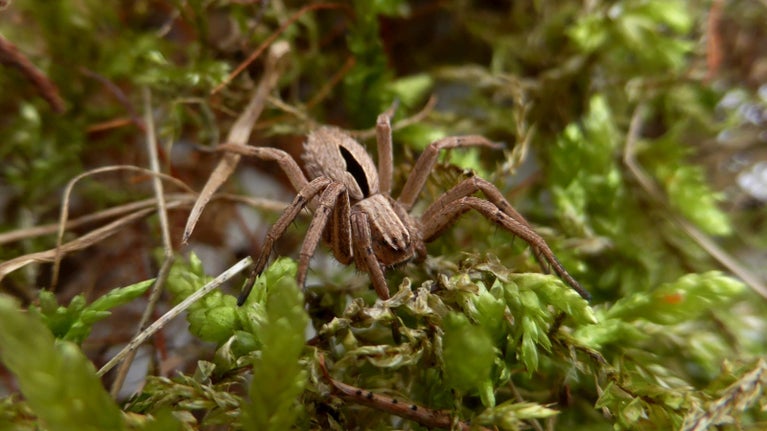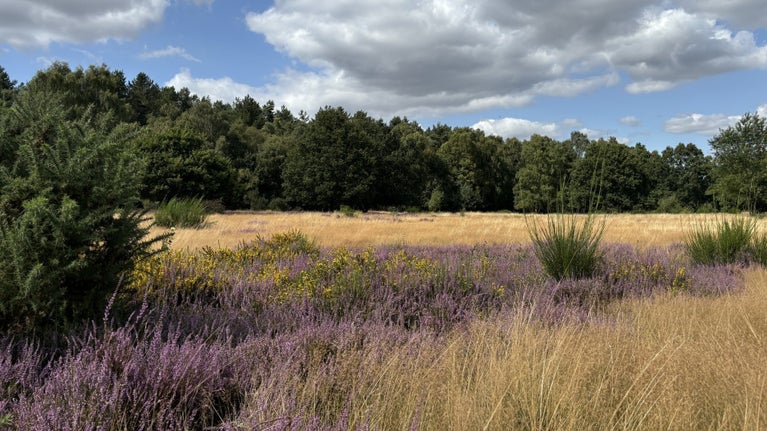The Diamond-backed Spider at Clumber Park
- Published:
- 01 January 2025

Clumber Park is currently the only known site in the whole of Britain that has a population of the Diamond-backed Spider. It was presumed extinct for more than half a century until two National Trust volunteers discovered the 7mm spider while carrying out an ecological survey on heathland in 2017.
Thanks now to funding from the Natural England Nature Recovery Programme, the National Trust is working in partnership with the British Arachnological Society to carry out vital research to ensure the continued survival of this threatened species.
Carl Hawke, Nature Conservation Adviser at the National Trust, says “The findings will be crucial to our understanding of the critically endangered Diamond-backed Spider and inform how we manage its habitat going forward. One of the mysteries is why it has not previously been found before and why it’s only here in Nottinghamshire. Our aim is to learn more so that we can create habitats elsewhere on the park too so that the population of the Diamond-backed Spider can grow and thrive.”
Dr Helen Smith, Conservation Officer at the British Arachnological Society, adds: “We're very relieved that this beautiful, distinctive, but desperately rare spider is now receiving the attention it needs to ensure its future in Britain. With its apparent loss from the heathlands of southern England, the Clumber Park population is mission critical. Natural England's funding, the National Trust's careful management and the research, will provide the foundations for its recovery on heathlands more widely in Nottinghamshire and, hopefully, back in the south as well.”

Ecologist, Anna Maka, has been leading the research at Clumber to get a better understanding of the spider’s life, its breeding cycles, the ecological role it plays, and how and why it thrives in its current environment.
“Spiders get a bad press and are often demonized, when they are important in our ecosystem. They are predators and are natural pest controllers, feeding on insects. We need spiders to maintain biodiverse habitats.”
“The Diamond-backed Spider had only been recorded a handful of times in the south of the country and not since 1969. Then the next we hear, it pops up here in Clumber! My job is a little like being a detective as we find out why it’s only in this part of Nottinghamshire.”
Anna, a self-confessed ‘spider geek’ admits she hasn’t always loved spiders. She had a fear of spiders for many years until she came across an ‘interesting looking’ vibrant green spider in her garden and wanted to know more and looked up the species online. Today she is a champion of educating others about spiders.
“It’s crucial to learn more and to raise awareness of the significance of the spider in the ecosystem and carry out conservation measures to ensure they thrive,” says Anna, who has also found Wasp and Labyrinth spiders within Clumber Park during her research.
The 3,800-acres of Clumber Park has heathland, woodland, wetlands, and wood pasture, providing a mosaic of habitats for many varieties of wildlife.
The Diamond-backed Spider is found only in one specific area of heathland habitat. The research project has been looking into what helps the species flourish and how that habitat can be replicated in other areas of the park.
“During the recent fieldwork, we found that the population may be bigger than we initially thought. This is great news, as the next steps in the next few years will be increasing the population numbers, meaning creating new populations.”
Habitat improvement by increasing the heather cover at Clumber Park is already ongoing as part of National Trust’s site management for the Site of Special Scientific Interest (SSSI), which will create and preserve the habitat the spider seems to depend on.
You might also be interested in

Our work outdoors at Clumber Park
Grade I listed park, Clumber Park is a special and important place. Our conservation work focuses on restoring the park's historic landscapes and protecting rare habitats for the future.

The history of Clumber Park
Discover the grand past of Clumber Park; as a hunting ground for royalty, under the care of 13 Dukes and its connections to the Second World War.

Visiting Clumber Park
With 3,800 acres of parkland to explore, there's so much to see and do at Clumber Park this spring.